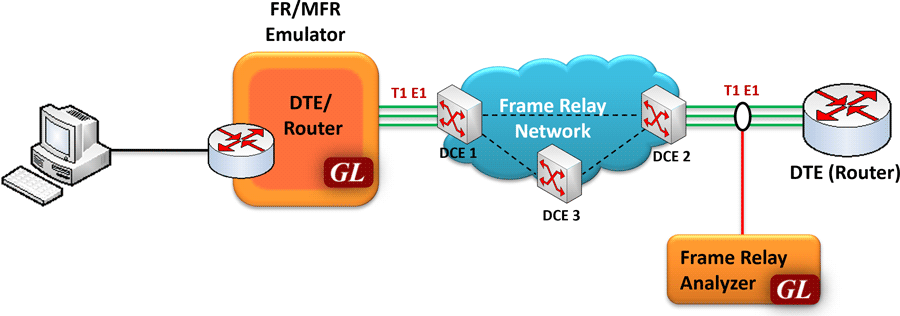Newsletter: GL Releases Multi-link Frame Relay Emulator
Welcome to the September 2009 issue of GL's Newsletter providing information and insight into our latest product Frame Relay Emulator - a client-server based software application for our T1 E1 hardware platforms.

Overview
Multi-Link Frame Relay, or MFR, is similar to Multi-Link PPP, and both are a form of inverse multiplexing. Users rely on inverse multiplexing when access line capacity does not scale smoothly, i.e. notice the big jumps in bandwidth from 56kbps, 1.544 Mbps, and 45 Mbps. In such cases, intermediate bandwidth must be derived by aggregating a number of smaller access lines into larger ones. MFR is used to derive a larger frame relay pipe by aggregating smaller frame relay pipes. For example, 5 T1 frame relay pipes could be bundled to appear as a single 7.5 Mbps frame relay pipe. Some of the advantages of using MFR are: better bandwidth sizing according to customer traffic requirements and potentially better QOS by minimizing delay.
MFR works by bundling multiple T1 circuits into a multilink bundle and fragmenting the individual frame relay frames into fragments. These fragments are then transported in parallel over the multiple T1 circuits. At the other end, the fragments are reassembled into the original frame relay frames. The protocol includes the use of sequence numbers to allow the fragments to be reassembled correctly and to ensure that the reconstructed frames are sent out in the original order in which they entered the network.
FR and MFR can be emulated and analyzed using GL's client-server based MFR Emulation and FR Analysis software modules. MFR is an optional application for GL's Card and USB based T1 E1 platforms.
Main Features
- Adheres to FRF.12 and FRF.15 standards
- Support two simulation modes - FR and MFR
- Add Frame Relay links to MFR bundle
- Activate and deactivate Frame Relay links (streams) dynamically
- Create and delete Virtual Channels on FR links/MFR bundle
- Generate and verify end to end traffic on each Virtual Channel
- Supports both Interface (UNI and NNI) and End-to-End fragmentation
- Supports various traffic source/sink types namely, Sequence Number, Binary File, Hex String and HDL file
- Create and delete Aggregated Virtual Channels
- Supports various Byte and Frame level Impairments
- Provides detailed statistics for FR link/MFR bundle and each Virtual Channel
For comprehensive information on the emulator, please refer to Frame Relay Emulator web page.
 Back to Latest News Page
Back to Latest News Page